new posts in all blogs
Viewing: Blog Posts Tagged with: children&apos, Most Recent at Top [Help]
Results 1 - 25 of 76
How to use this Page
You are viewing the most recent posts tagged with the words: children&apos in the JacketFlap blog reader. What is a tag? Think of a tag as a keyword or category label. Tags can both help you find posts on JacketFlap.com as well as provide an easy way for you to "remember" and classify posts for later recall. Try adding a tag yourself by clicking "Add a tag" below a post's header. Scroll down through the list of Recent Posts in the left column and click on a post title that sounds interesting. You can view all posts from a specific blog by clicking the Blog name in the right column, or you can click a 'More Posts from this Blog' link in any individual post.

By:
Stacy Whitman,
on 12/11/2012
Blog:
Stacy Whitman's Grimoire
(
Login to Add to MyJacketFlap)
JacketFlap tags:
christmas,
children's literature,
hanukkah,
gift-giving,
holiday buying guide,
tu books,
tu,
tankborn,
wolf mark,
galaxy games,
vodnik,
summer of the mariposas,
cat girl's day off,
Add a tag
Hanukkah is in full swing, and Christmas is right around the corner. Thinking about getting a book for that teen or kid in your life? Or for the adult YA reader in your life (you are welcome in this no-judgement zone; we love YA too!). Don’t forget to include Tu Books in those plans! Here are a few examples of people you’re looking to find a gift for.
For the reader looking for comedy (sometimes light, sometimes a little morbid):

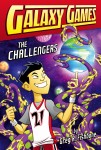
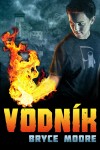
For the teen looking for something with an edge:
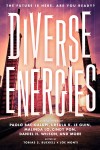
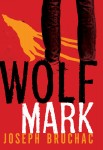


For the middle-grade reader or young teen looking for a “clean” read:



For fans of folklore and fairy tales:


For fans of science fiction, especially technology and space-related:


For fans of Twilight:

For fans of Ferris Bueller’s Day Off and Chicago:

Got any other kinds of readers in your life that need a Tu Book recommendation? Ask away in the comments!
Originally published at Stacy Whitman's Grimoire. You can comment here or there.
I’ll be at this conference, and hope you can make it as well! Info below is from the press release:
Las Comadres to Host October Conference for Latino Writers
Day-Long Event to Offer Experts, Insight into Publishing Industry Opportunities
New York, NY; July 26, 2012 – Las Comadres Para Las Americas, the national Latina organization, will present a day-long conference on October 6 for Latino writers seeking more access into the publishing industry.
Comadres and Compadres Writers Conference will be held at Medgar Evers College, CUNY, Brooklyn. Joining La Comadres as collaborators are the National Black Writers Conference, the Center for Black Literature, the Foreign Language Department and the Latino American Association, Full Circle Literary, Marcela Landres, and Scholastic, with support from the Association of American Publishers.
Through the workshops, panels and other sessions, writers will gain an insider’s perspective into how to best navigate the challenges and opportunities of the industry.
A highlight of the day will be a full schedule of one-on-one meetings for writers with agents and editors. Participants currently include Johanna Castillo, Vice President & Senior Editor/Atria, Simon & Schuster: Jaime de Pablos, Director/Vintage Español, Knopf Doubleday Group; Adriana Dominguez, Agent/Full Circle Literary; Mercedes Fernandez, Assistant Editor/Dafina Books, Kensington Publishing; Sulay Hernandez, Editor/Other Press; Cheryl Klein, Executive Editor/Arthur A. Levine Books; Selina L. McLemore, Senior Editor/Grand Central Publishing; Christina Morgan, Editor/Harcourt Houghton Mifflin; Lukas Ortiz, Managing Director/Philip G. Spitzer Literary Agency, Inc.; Diane Stockwell, Founder/Globo Libros Literary Management; and Stacy Whitman, Founder and Editorial Director/Tu Books.
Scheduled panels will examine magazines and literary journals, genres, poetry, children’s/young adult writing, fiction, non-fiction, publicity and self-publishing. There will also be a session for authors to pitch their work and get instant feedback as well as an agents/editors panel.
Keynote speaker is author and television personality Sonia Manzano. Having originated the role of “Maria” on Sesame Street, Manzano wrote two children’s books, No Dogs Allowed (Simon and Schuster, 2004) and A Box Full of Kittens (Simon and Schuster, 2007), and will have her first YA novel, The Revolution of Evelyn Serrano, published by Scholastic in Fall 2012.
Registration for writers and vendors is now open for the conference.
Las Comadres is a nationwide grassroots-based group of Latinas launched informally in 2000 in Austin, TX. The national networks, created in 2003, have grown to over 100 US cities. Its 15,000 strong membership keeps Latinas connected via email networks, teleconferences, and monthly potluck events in individual cities. In conjunction with the Association of American Publishers, it sponsors a national book club promoting the work of Latino authors and encouraging literacy. The National Latino Book Club is currently celebrating its fourth year
Originally published at Stacy Whitman's Grimoire. You can comment here or there.
On Facebook today, I’ve started a poll that anyone is welcome to answer. Let me know: do you prefer e-books to print books or vice versa? Both, depending on the circumstances? Or do you forget e-books entirely and go for audio instead of e-books? Check it out and weigh in!

And if you aren’t on FB, feel free to weigh in here in the comments!
Originally published at Stacy Whitman's Grimoire. You can comment here or there.

By:
Stacy Whitman,
on 6/21/2012
Blog:
Stacy Whitman's Grimoire
(
Login to Add to MyJacketFlap)
JacketFlap tags:
science fiction,
reviews,
diversity,
conferences,
publishing,
fantasy,
guadalupe garcia mccall,
tu,
netgalley,
summer of the mariposas,
dystopia,
community,
children's literature,
diverse energies,
Add a tag
Will you be at ALA in Anaheim? So will Guadalupe Garcia McCall, author of Summer of the Mariposas! 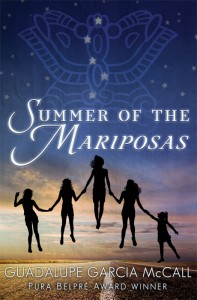 Guadalupe will be there to celebrate her first book, Under the Mesquite, and its win of the Pura Belpre Author Award, but she’ll also be signing ARCs of Mariposas, so be sure to come by the booth. You can find the schedule on the Lee & Low blog.
Guadalupe will be there to celebrate her first book, Under the Mesquite, and its win of the Pura Belpre Author Award, but she’ll also be signing ARCs of Mariposas, so be sure to come by the booth. You can find the schedule on the Lee & Low blog.
Several of the contributors to Diverse Energies will also be at ALA, and though they don’t have a specific signing time, they will be dropping in to sign select copies of the book. Perhaps you might be the lucky one to win a copy in a drawing. And if you just want to read some awesome stories, signed or not, from Ursula K. Le Guin, Paolo Bacigalupi, Daniel H. Wilson, Cindy Pon, Malinda Lo, Greg van Eekhout, and more, make sure to stop by and take a look.
And whether or not you’re off to California this weekend, if you’re a reviewer or a librarian and on NetGalley (and if you’re one of those and NOT on NetGalley, check it out) our fall books are now available for you to request for review. Take a look!
Originally published at Stacy Whitman's Grimoire. You can comment here or there.
Apologies—just realized today that the link to my Pinterest with the up-to-date booklists on the old science fiction fantasy booklist page was broken and only linking to the picture of the page, not the page itself. Sorry!
Originally published at Stacy Whitman's Grimoire. You can comment here or there.
Mostly because I was curious how much of it was out there in the last couple years with paranormal and dystopian being so popular, I made a list of high fantasy for young adults published in the last couple of years. I went as far back as 2010, and it’s still not that large a list. Feel free to suggest in the comments books I might have missed, but remember–only books from 2010 to the present. If you’re looking at a paperback, be sure the original version of the book was that recent.
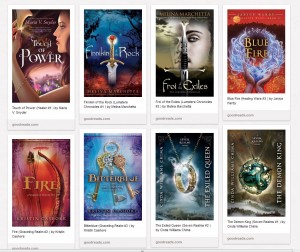
Originally published at Stacy Whitman's Grimoire. You can comment here or there.

By:
Stacy Whitman,
on 5/22/2012
Blog:
Stacy Whitman's Grimoire
(
Login to Add to MyJacketFlap)
JacketFlap tags:
science fiction,
community,
reading,
young adult literature,
diversity,
publishing,
fantasy,
booklists,
children's literature,
Add a tag
ETA 5/22/12: I’m keeping this book list up to date on Pinterest nowadays, linking each book to its Goodreads entry. It’s much easier to just pin a book than to keep this list up to date. For the running lists (broken down by age group and genre) and more, go here:
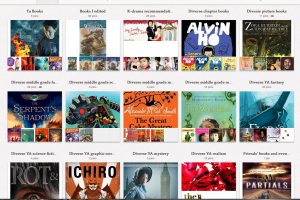
ETA: I’ve finally gotten the ability to edit the post back, so I’ve put as many of the suggested books into the list now as I can. Suggestions always still welcome. This is a continuous project.
I’ve gotten a lot of great suggestions to add to the list, but my website seems to still be broken, and my own computer has a dead motherboard (well, it did when I started writing this last week—thankfully, it’s now fixed). I’m still figuring out why WordPress won’t let me edit any of my old content.
So, in the interest of having one place that people can use as a resource, I’m going to copy everything into this entry. Rather than divide the list by what I’ve read and what I haven’t, which was just more a personal exercise last year in wondering whether my own reading habits had reached past my own culture, I’ll divide the list by age group and genre (fantasy/SF). What that means is that I am not making a comment on how good I think a book is or recommending it/not recommending it—there are several books on this list I haven’t had a chance to read yet. It’s simply a list compiling what’s out there. I’ve also added books that I’ve discovered over the last year or that have been suggested to me in the comments. Go to the previous booklist post for comments on some of the books in this list.
Middle Grade Fantasy
- Where the Mountain Meets the Moon, 2009, Grace Lin
- Moribito: Guardian of the Spirit, 2008, Nahoko Uehashi, and its sequel, Moribito II
- City of Fire, Laurence Yep
- The Tiger’s Apprentice, Laurence Yep
- Dragon of the Lost Sea, Laurence Yep (and pretty much anything else written by Laurence Yep)
- Zahrah the Windseeker, Nnedi Okorafor-Mbachu
- Chronus Chronicles, Anne Ursu (someone mentioned this and I haven’t read them—are the main characters people of color or is it set in a non-Western culture? from its Amazon listing, it seems to star a white girl and use Greek mythology, which are great, but don’t fit the definition we’re using here)
- The Red Pyramid, Rick Riordan
- Sword and Wandering Warrior, Da Chen
- The Conch Bearer, Chitra B. Divakaruni
- Circle of Magic quartet, Tamora Pierce
- Circle Opens series, Tamora Pierce
- Pendragon series (?)
- Un Lun Dun, China Mieville
- Lavender-Green Magic, by Andre Norton
- Dragon Keeper and Garden of the Purple Dragon, Carole Wilkinson
- Moonshadow: Rise of the Ninja, Simon Higgins
- The Magical Misadventures of Prunella Bogthistle, Deva Fagan
- Magic Carpet, Scott Christian Sava
- Marvelous World #01: The Marvelous Effect, Troy Cle
- Ninth Ward, Jewel Parker Rhodes
Middle Grade Science Fiction
- The Animorphs series
- The True Meaning of Smek
As we’ve discussed on here before, diversity in children’s and YA books can be pretty controversial. Just reading the comments sections at any of the latest posts about diversity can make your head spin, between the people denying that white privilege exists and those saying that even if it does exist, it doesn’t matter, because “people of color don’t read.”
Those things aren’t true, but how do we dispel them? How do we address the multi-pronged issue of getting more diverse books out there?
The CBC Diversity Committee is working to help address this. This week on the CBC Diversity blog, the theme is “It’s Complicated.” Check out Nancy Mercado’s opening post:
The internet can often be a rough-and-tumble kind of place when it comes to complex and layered discussions, but we think it’s possible and necessary to have a respectful and open forum where we are able to chat about some of the challenges that we face, as well as the opportunities that exist when we come together as a community.
This will be a safe space for us in publishing—writers, editors, marketing folks, sales people, artists, anyone involved in getting books to kids—to discuss the issues.
Today, Cynthia Leitich Smith is talking about the fear of saying something wrong. Hop on over and join in on the conversation.
———————–
On a related note, here’s some recent coverage of this issue.
The Atlantic Wire: The Ongoing Problem of Race in YA
Huffington Post: Race On YA Covers: Survey Reports A Continued Lack Of Diversity
Jezebel: White Folks Star in 90% of 2011′s Young Adult Book Covers
John Scalzi: Straight White Male: The Lowest Difficulty Setting There Is
John Scalzi: “Lowest Difficulty Setting” Follow-Up
Sarah Ockler: Race in YA Lit: Wake Up and Smell the Coffee-Colored Skin, YA Authors [at SFWA]
Sarah Ockler: Race in YA Lit: Wake Up and Smell the Coffee-Colored Skin, YA Authors [at her own blog]
Originally published at Stacy Whitman's Grimoire. You can comment here or there.

By:
Stacy Whitman,
on 5/8/2012
Blog:
Stacy Whitman's Grimoire
(
Login to Add to MyJacketFlap)
JacketFlap tags:
celebrities,
reviews,
diversity,
cats,
fantasy,
chicago,
bloggers,
children's literature,
kimberly pauley,
tu books,
review roundup,
tu,
cat girl's day off,
Add a tag
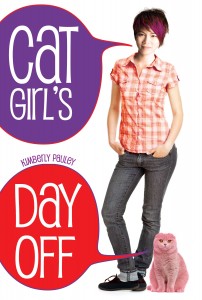 Like I said yesterday, people are loving our spring books just as much as they loved those we published in the fall (for which we’re still getting reviews in–maybe I should do another roundup of those).
Like I said yesterday, people are loving our spring books just as much as they loved those we published in the fall (for which we’re still getting reviews in–maybe I should do another roundup of those).
Here’s what people are saying about Kimberly Pauley’s Cat Girl’s Day Off:
Booklist:
In a multicultural family bestowed with supernatural abilities, such as mind reading and laser vision, Nat Ng believes her ability to communicate with cats is more of an embarrassment than a special talent. Only her family and her two best friends, exuberant Oscar and drop-dead gorgeous Melly, know her secret. When a production crew filming a remake of Ferris Bueller’s Day Off comes to the teens’ Chicago high school, Nat reluctantly agrees to join her friends as an extra. Nat might believe that her talent is unexceptional, but cat-loving readers will thoroughly enjoy where her ability leads her as she tours through the same Chicago landmarks seen in Ferris Bueller. This title has the light, buoyant humor of a Meg Cabot book, with the same blend of superpowers and high-school life that won Pauley many fans with Sucks to Be Me (2008). And the cats! Helping, hindering, sniffing out bad guys, sneering at good guys, the cats shamelessly rule.
Publishers Weekly (full review):
Pauley (Still Sucks to Be Me) offers amusing insights into the minds of cats, snappy dialogue, and a fast-paced plot. Readers should easily relate to Nat, and cat-lovers in particular will find a lot to enjoy in this romp.
Kirkus Reviews (full review):
. . . Since there’s no one else ready and able to rescue Easton, Nat and her pair of slightly off-beat friends take on the job. This leads to one perilous situation after another, many of them featuring the italicized thoughts—appropriately laconic and snarky—of the various cats that Nat seeks out for help. Her bumpy budding romance with classmate Ian adds an amusing love interest to the mix. The fantasy elements, solidly grounded in an otherwise real world, seem ever-so-believable. Lively conversation, strong characterizations and a fast pace make this a breezy read. The funny feline thoughts are catnip for the audience.
A worthwhile adventure and an easy sell for feline fanciers who already know what their pets are saying.
School Library Journal (if you are a subscriber, you can access the full review on their site; otherwise, look in the April 2012 print edition):
Pauley’s homage to Chicago and her favorite teen movie is entertaining, hilarious, and exceptionally creative. Populated with wonderfully eccentric and endearing characters, this lighthearted comedy will be an instant hit, especially among teen and tween girls. One thing is for certain—readers will never again look at their feline friends in the same way.
Charlotte’s Library (full review):
Cat Girl’s Day Off is fast a
Though I am frenetically working to get some fall ARCs out to the printer, making me absent here despite having a computer at home again (and friends coming into town last week and this weekend has made me busier than normal at home, too), I was able to write a couple posts over at the CBC Diversity Committee blog this week and last. If you’re interested in getting into publishing but unsure how, check out our series of posts by the committee members on How I Got into Publishing. Looking for a good book? Take a look at Books that Changed My Life and our Book Spotlight. And don’t forget that at the end of the month, the Highlights Foundation workshop Creating an Authentic Cultural Voice is coming up quickly!
Originally published at Stacy Whitman's Grimoire. You can comment here or there.
3/21/2012, ETA: Because this post has been linked a lot over the course of the last several months, I just wanted to point out that this was posted when I was in the process of starting the small press that became Tu Books, an imprint of Lee & Low Books, where we publish middle grade and young adult science fiction, fantasy, and mystery starring main characters of color. We’ve published five books so far, and I think you’ll love them. If you believe, as I do, that more stories like these are important—awesome fantastic adventures in which people of color are the stars—please check them out and share them with your friends.
***
When I was in the fourth grade, I always wondered why I wasn’t born Japanese. You see, back then (mid-80s), the news was always saying that the Japanese had the best education system in the world, and that Americans were falling behind. Given that my life goal at the time was to be the smartest kid in the world, I really, really wished that I had been born Japanese.
Nothing I could do about that, but I could do my geography project on Japan. (I was in the accelerated group, and we did countries of the world instead of state history in the fourth grade. I also did Australia and India.) But the only resources I could find in our relatively small school library were a decade-old encyclopedia and several books from the 50s. I ended up making a small English-Japanese dictionary with about five words (which I still have around here somewhere) for my project to go along with the report.
I can’t recall having read one single book from the time I was able to read until the time I graduated high school about any character who was from an Asian country or about an American whose family background was Asian, however. There just wasn’t anything like that available to me in small-town farm country in Illinois. I’m sure this is as much to do with librarian/teacher selection as it had to do with publishing availability, but that’s just the way things were.
Looking at the CCBC’s report from last year of books published in 2008, however, I’m not sure we’ve come very far from that. We’ve come a long way, yet how far is there to go?
Ever since Race Fail 09 (which I didn’t follow much of, but even reading a part of which was very thought-provoking), I’ve become even more aware of this issue as it relates to fantasy than I have before (even though before that, as an editor, I always tried to acquire books that were as diverse as possible, whether that meant magic-wielding kender or girls from all over the world battling vampiric fairies). I’ve pondered on it for several months, and it’s been great to see so many authors pondering on it in their blogs, too. Just in the last few days, I’ve found a couple great posts on it by authors R.J. Anderson and Mitali Perkins (Mitali has a lot of great insights into this, as you can see from her blog).
The biggest thing I’ve been pondering is that it seems to me that in children’s and YA fantasy, we’re probably at a smaller percentage of multicultural themes and characters than realistic books (note that I’m conflating race and culture here on purpose—I’m using race and culture in an and/or way). Note how in the CCBC report, they
If you’re in the greater New York City area this weekend, you might be interested to know that I’ll be at Lunacon in Rye Brook tomorrow and Sunday. Here’s my schedule:
• What’s Hot – Young Adult, Sat 13:00 – 14:00, William Odelle
• The Tarnished Age of Science Fiction? (M), Sat 16:00 – 17:00, Birch
• Fantasy From Everywhere, Sun 10:00 – 11:00, Elijah Budd
• What makes Y.A., Y.A.? (M), Sun 14:00 – 15:00, Westchester Ballroom A1
If you’ll be around, be sure to say hi! Though if you come to the YA one on Sunday, I have a feeling you’ll be there for Tamora Pierce, not me…
Originally published at Stacy Whitman's Grimoire. You can comment here or there.
I’ve been talking a lot about Guadalupe Garcia McCall’s new book, Summer of the Mariposas, which we’ll be publishing at Tu this fall. Another thing coming out this fall that we’ll have more info about in the coming weeks is an amazing anthology edited by Tobias Buckell and Joe Monti featuring a list of authors that will knock your socks off. More on that in the coming weeks when the official announcement comes out.
And if you’re a Tankborn fan, you’ll be happy to know that coming Spring 2013 is the second book of what is now a Tankborn trilogy! A lot of the questions that remained open in book 1 will be explored in further depth. Will Kayla and Devak be able to overcome their huge gap in status? Will the GENs be able to take ownership of their own resistance movement? What secrets are lurking in this world that Kayla hasn’t even known to discover yet? It’s gonna be awesome.
Coming that same season is a new book we just acquired that I’m so excited about: New Worlds by Shana Mlawski stars Balthazar Infante, a bookmaker’s apprentice who, accompanied by a half-genie, sets off on Columbus’s journey to the New World to avoid the Spanish Inquisition and fulfill a quest to find his father and figure out his magical heritage. A look at this time period of history from the point of view of those who the Spanish Inquisition targeted, Jewish and Moorish people, and then jumping across the pond to look at Columbus’s journey in a new light. I never even realized that the two happened at the same time! More on that as the editorial process goes forward.
Originally published at Stacy Whitman's Grimoire. You can comment here or there.
I’m going to be at this, and you should go too! Check out the call for applications below.
Call for Applicants: Creating an Authentic Cultural Voice
April 26-29, 2012
A program from the Highlights Foundation
Our children live in a world of diverse voices and experiences. They deserve to live in a book that authentically represents their world.
Creating an Authentic Cultural Voice
Join award-winning authors Donna Jo Napoli and Mitali Perkins, as well as editors Alvina Ling and Stacy Whitman, and special guest Kathryn Erskine for an intensive four-day workshop. Your mentors will work with you to discover your true cultural voice through impeccable research, imagination, empathy, and experience. Our goal is to gather a community of open-minded children’s book authors who wish to think deeply about questions such as:
- Who has the right to write multiculturally?
- How do we bring humility to our research?
- What audience are we writing for?
If you are interested in being a part of this amazing opportunity, please fill out the application and submit it, with your responses to the essay questions, in addition to your writing sample. Applications for our scholarships are available by e-mailing Jo Lloyd at [email protected], or calling, toll-free, (877) 512-8365.
Originally published at Stacy Whitman's Grimoire. You can comment here or there.
As those who went to LTUE can attest, it seems that I caught a bad cold either on the plane or on the moment my foot touched Utah soil, and I was a little bit out of it during the con. But even so, I had a great time, and got to catch up with a lot of old friends, meet new people, and even sit down with some writers I might work with someday. Hopefully I didn’t give them a cold while I was at it.
Normally I’d give a more complete run-down, but others might remember it more clearly than I could due to the fog of this cold, which I’m still getting over. I had the worst time remembering people’s names—I even blanked on the names of long-time friends.  Sorry, guys! You know I really love you, but names aren’t my forte even when I’m thinking straight, and this week it was very hard to think straight.
Sorry, guys! You know I really love you, but names aren’t my forte even when I’m thinking straight, and this week it was very hard to think straight.
I was able to think straight on my panels at least (though with moments of “you go ahead, I forgot what I was going to say”), and my Writing Cross-Culturally presentation was both well-attended (wow, standing room only!) and included attendees who had some great questions. For those who have come to this blog looking for the questions we discussed at the end of class, go to my SCBWI wrap-up, where I summarized those same questions. Also, if you didn’t get the handout and were looking for the links and resources I gave out in class, comment or email me with a request for it, and I can get you the Word document. Or perhaps I can just post it here, but later, once I’ve caught up on all I missed when I was out of the office.
Originally published at Stacy Whitman's Grimoire. You can comment here or there.
Life, the Universe, and Everything is NEXT WEEK! That means I’ll be seeing many of you then. If you’re unable to attend LTUE, though, and are in the area, you should check out this event. It’s free for any who’d like to attend—you don’t have to be a student. And if you are going to LTUE, come anyway! Karen won’t be on any panels officially, so this is your chance to ask her questions and perhaps even get a book signed after the program.
So You Want to Work in Publishing For Young Readers?
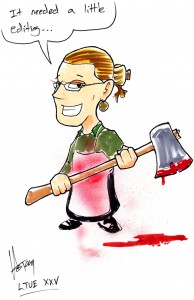
Courtesy Howard Tayler, SchlockMercenary.com
If you are interested in working as an author, an illustrator, an editor, or in any other position in the publishing for young readers market, you are invited to come listen to, discuss with, and learn from Stacy Whitman, on February 8th, from 5:10-7:40 pm. in room 251 Tanner Bldg at BYU.
Stacy Whitman is the editorial director of Tu Books, an imprint of Lee & Low Books. In 2009 while living in Orem, Utah, she founded a small press named Tu Publishing, dedicated to publishing multicultural fantasy and science fiction for children and young adults, which was acquired by Lee & Low Books of New York City and became Tu Books. The imprint launched fall 2011 with Tankborn, Wolf Mark, and Galaxy Games: The Challengers, and will follow up with BYU graduate Bryce Moore’s book this spring, Vodnik. Whitman holds a master’s degree in children’s literature from Simmons College. Learn more about Tu, including submissions guidelines and links to buy books, at http://www.leeandlow.com/p/tu.mhtml. Stacy’s blog of writing and publishing advice can be found at www.stacylwhitman.com.
Stacy’s presentation will be a wide open discussion on the publishing business, including, but not limited to the following topics:
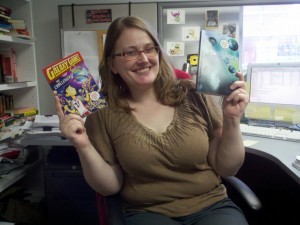 Preparing for a career in publishing
Preparing for a career in publishing- What does an editor do all day?
- Working with authors and art directors
- Advice for writers and illustrators on getting published
- Diversity in publishing and books
- Genre fiction and children’s fiction
Stacy will be accompanied by author Karen Sandler.
Karen Sandler is the author of seventeen novels for adults, as well as several short stories and screenplays. Before becoming a full-time writer, she worked as a software engineer, including work on the space shuttle program and communications satellites. TANKBORN, published by Tu Books, is her first young adult science fiction novel. She lives in northern California with her husband, three cats, and an Andalusian/Morgan mare. For more information about Sandler, visit karensandler.net.
Originally published at Stacy Whitman's Grimoire. You can comment here or there.
Remember how I told you that I’d acquired Guadalupe Garcia McCall’s Six Little Sisters? In case you’re waiting with bated breath, it will now and forevermore be called Summer of the Mariposas. It’s a gorgeous title, and I think it’s even better than Seis Hermanitas (which is Six Little Sisters in Spanish) because of the imagery of butterflies that is so prominent in the book. Just got a revision in, which I’m looking forward to reading. Just thought I’d tease you with that, and tell you that you’ll be able to read it yourself this fall.
And while you’re waiting, go read Guadalupe’s debut novel in verse, Under the Mesquite, which just won the Pura Belpre author award and is being put on best-of lists left and right, and congratulate her! I didn’t edit that one, so send congratulatory thoughts to my colleague Emily for a job well done.
Originally published at Stacy Whitman's Grimoire. You can comment here or there.

By:
Stacy Whitman,
on 2/1/2012
Blog:
Stacy Whitman's Grimoire
(
Login to Add to MyJacketFlap)
JacketFlap tags:
cbc diversity committee,
deep culture,
scbwi,
bookselling,
reading,
diversity,
publishing,
writing,
cons,
children's literature,
Add a tag
I had such a great time talking to everyone at SCBWI Winter Conference this weekend and teaching the multicultural books breakout. In one of my sessions, we didn’t get to this part of my notes, and for the others, we had to go through the list quickly because it was so long.
 One thing we talked about is how the industry itself is working on awareness and furthering diversity among the books themselves and future publishing personnel. Last night, we launched the CBC Diversity Committee, which is working on these goals with other publishing partners. We have a brand-new website (which will gain content as time goes on) and plan a variety of events such as panels discussing diversity, visiting school career days and job fairs, and just continuing the conversation about diversity in all platforms, such as social media. See also some press coverage, where Robin Adelsen, the CBC’s executive director, shares our goals:
One thing we talked about is how the industry itself is working on awareness and furthering diversity among the books themselves and future publishing personnel. Last night, we launched the CBC Diversity Committee, which is working on these goals with other publishing partners. We have a brand-new website (which will gain content as time goes on) and plan a variety of events such as panels discussing diversity, visiting school career days and job fairs, and just continuing the conversation about diversity in all platforms, such as social media. See also some press coverage, where Robin Adelsen, the CBC’s executive director, shares our goals:
To make a difference, we will focus on recruitment by visiting high schools and colleges, providing resources on the CBC Diversity blog and promoting discourse by hosting panel and roundtable discussions.
I also promised attendees of my session that I would share with them the list of questions we discussed that might help us to know what questions to ask when thinking about deep cultural differences, whether we’re talking about writing cross-culturally in the sense of writing from a perspective not our own, or whether we’re thinking about reaching a readership that isn’t entirely our own culture, and if perhaps there might be some ways to express/acknowledge those differences in our writing. In the case of writing from our own cultural perspective, these questions may be less useful, but nonetheless I think they might get us all thinking about how culture affects decisions we make—not as a form of conditioning, at least no more than any other culture, but as a framework by which we interpret the world. Thinking about these questions may help us in our writing as we apply them to characterization, worldbuilding, plot (how a character reacts to certain problems may certainly be affected by cultural attitudes, whether he or she goes with mainstream culture or not, as does how other characters interact with that person, which eventually over the course of a book turns into a sequence of actions that turn into plot), setting, and so forth.
 These questions are from chapter 9 of the excellent book A Beginner’s Guide to the Deep Culture Experience: Beneath the Surface by Joseph Shaules. The author was writing to an audience of potential U.S. expats living abroad, with the idea of helping them to think about cultural differences and ways to adapt to their new countries and enjoy the journey, but as I read it, I found so much that is applicable to ways we might think of culture in terms of writing about it, not to mention the adaptation experiences I had living with college roommates from other countries The intercultural experience goes both ways—though I didn’t live in another country, and so my experience wasn’t quite as deep, I still found I had to adapt and learn from my roommates if I wanted to get along with them.
These questions are from chapter 9 of the excellent book A Beginner’s Guide to the Deep Culture Experience: Beneath the Surface by Joseph Shaules. The author was writing to an audience of potential U.S. expats living abroad, with the idea of helping them to think about cultural differences and ways to adapt to their new countries and enjoy the journey, but as I read it, I found so much that is applicable to ways we might think of culture in terms of writing about it, not to mention the adaptation experiences I had living with college roommates from other countries The intercultural experience goes both ways—though I didn’t live in another country, and so my experience wasn’t quite as deep, I still found I had to adapt and learn from my roommates if I wanted to get along with them.
I highl

By:
Stacy Whitman,
on 2/1/2012
Blog:
Stacy Whitman's Grimoire
(
Login to Add to MyJacketFlap)
JacketFlap tags:
cbc diversity committee,
deep culture,
scbwi,
bookselling,
reading,
diversity,
publishing,
writing,
cons,
children's literature,
Add a tag
I had such a great time talking to everyone at SCBWI Winter Conference this weekend and teaching the multicultural books breakout. In one of my sessions, we didn’t get to this part of my notes, and for the others, we had to go through the list quickly because it was so long.
One thing we talked about is how the industry itself is working on awareness and furthering diversity among the books themselves and future publishing personnel. Last night, we launched the CBC Diversity Committee, which is working on these goals with other publishing partners. We have a brand-new website (which will gain content as time goes on) and plan a variety of events such as panels discussing diversity, visiting school career days and job fairs, and just continuing the conversation about diversity in all platforms, such as social media. See also some press coverage, where Robin Adelsen, the CBC’s executive director, shares our goals:
To make a difference, we will focus on recruitment by visiting high schools and colleges, providing resources on the CBC Diversity blog and promoting discourse by hosting panel and roundtable discussions.
I also promised attendees of my session that I would share with them the list of questions we discussed that might help us to know what questions to ask when thinking about deep cultural differences, whether we’re talking about writing cross-culturally in the sense of writing from a perspective not our own, or whether we’re thinking about reaching a readership that isn’t entirely our own culture, and if perhaps there might be some ways to express/acknowledge those differences in our writing. In the case of writing from our own cultural perspective, these questions may be less useful, but nonetheless I think they might get us all thinking about how culture affects decisions we make—not as a form of conditioning, at least no more than any other culture, but as a framework by which we interpret the world. Thinking about these questions may help us in our writing as we apply them to characterization, worldbuilding, plot (how a character reacts to certain problems may certainly be affected by cultural attitudes, whether he or she goes with mainstream culture or not, as does how other characters interact with that person, which eventually over the course of a book turns into a sequence of actions that turn into plot), setting, and so forth.
These questions are from chapter 9 of the excellent book A Beginner’s Guide to the Deep Culture Experience: Beneath the Surface by Joseph Shaules. The author was writing to an audience of potential U.S. expats living abroad, with the idea of helping them to think about cultural differences and ways to adapt to their new countries and enjoy the journey, but as I read it, I found so much that is applicable to ways we might think of culture in terms of writing about it, not to mention the adaptation experiences I had living with college roommates from other countries The intercultural experience goes both ways—though I didn’t live in another country, and so my experience wasn’t quite as deep, I still found I had to adapt and learn from my roommates if I wanted to get along with them.
I highly recommend reading the whole book, or at least chapter 9, where he expands on these questions and discusses how the answers are not either-or, good/bad—just choices that don’t have a value attached to them that show how different people choose to handle universal human questions in different ways.
I don’t know that we’ve ever discussed the concept of the Magical Negro here before, or its equivalent in American storytelling with Asian and Native American characters, and I think we need to. With Tu’s emphasis on protagonists being characters of color, I don’t get as many submissions nowadays using this old stereotype/trope, but it’s one that I’ve seen a lot of in past years because it’s so common, an easy way to add diversity that has a subtle racism in it because of the way it privileges the white main character over the person of color who is helping him (and it’s usually a him).
I just ran into this great post by Nnedi Okorafor from 2004—that you should go read in its entirety—that sums up the trope quite nicely:
- He or she is a person of color, typically black, often Native American, in a story about predominantly white characters.
- He or she seems to have nothing better to do than help the white protagonist, who is often a stranger to the Magical Negro at first.
- He or she disappears, dies, or sacrifices something of great value after or while helping the white protagonist.
- He or she is uneducated, mentally handicapped, at a low position in life, or all of the above.
- He or she is wise, patient, and spiritually in touch. Closer to the earth, one might say. He or she often literally has magical powers.
Think about even some recent movies and you’ll see this trope at work. (Movies are easy comparisons for me as shortcuts, because they tend to be easier touchstones for a larger audience.) Cowboys and Aliens, anyone? I was enjoying the complicated character interactions of C&A right up until the end when (SPOILER ALERT) a certain important character dies, which ruined the entire movie for me. Not quite a Magical Negro in that situation, but related to it. American martial arts movies from the 80s and 90s had plenty of Magical Asians teaching young white kids karate or kung fu (yes, Karate Kid, awesome as it is, falls into this).
Sometimes the trope is fairly benign. So let’s look at Karate Kid. After quite a bit of focus on Daniel, eventually there’s a bridging of the cultural gap between Mr. Miyagi and Daniel—eventually Daniel learns about Mr. Miyagi’s past and we come to understand Mr. Miyagi as a person, which deepens the character development and I think changes the dynamic from one in which his existence in the plot is only to help the main character. Daniel has at least a tiny bit to offer Mr. Miyagi as well, in the form of friendship to a lonely old man. The balance is still in Daniel’s favor, but not as severely as in other stories that use this trope.
In Okorafor’s post, she examines Stephen King’s use of this trope, and she also notes that
King is not a racist. The Talisman, The Stand, The Shining, and The Green Mile are superb novels and I do think that there was good intent behind the making of the characters I’ve mentioned. Nevertheless, these characters are what they are and King does benefit from that fact. Magical Negroes are always interesting, being magical and mysterious, and they make things happen. When a Magical Negro pops up, the story crackles and pops.
The trope is a trope because it can make a story work. Yet just because it’s something that works doesn’t mean it’s something we shouldn’t try to avoid when we can, especially because the trope can be pretty caustic, too—think about, especially, storytelling about Native Americans. Last of the Mohicans and Dances with Wolves are pretty good examples of When Tropes Go Bad: the Native Ame
Check it out here!
Originally published at Stacy Whitman's Grimoire. Please leave any comments there.
I’ve been reading a number of highly anticipated sequels lately, as well as editing a sequel or two myself. It has me thinking about the best ways to reintroduce your reader to your characters and plot that they may have just read last week—or maybe it’s been more than a year. How do you avoid over-dumping on the re-reader without leaving the non-re-reader in the dusts of confusion?
One strategy I’ve seen in sequels for young readers, especially, is to just stop the action entirely at some point in the first chapter and explain what happened in the last book. It’s a trick I saw used a lot in series books for kids when I was a young reader obsessed with Trixie Belden and Nancy Drew books.
This doesn’t really work for me. Any stopping of the action for an infodump breaks the spell for me as a reader, taking me time to rebuild my suspension of disbelief. It worked to a point in those old series books because my library didn’t always have every single copy in order when I wanted them (not to mention they were missing several volumes), but especially if you’re not writing series books (as in, shared-world), it’s not the best strategy, in my opinion.
Then there’s the school of thought that just dumps you into the action of the new book. This can work, but it’s tricky. One book I read recently is a good example (no, I’m not going to tell you the name of it): I’m right there with the story until the character thinks of another character who she’s lost touch with. He’s not in any scene for the first quarter of the book, and I was racking my brain that whole time trying to remember which of two or three possibilities he could be, and that confusion wasn’t cleared up when he showed up in-scene. And it’s a confusion that I’m not sure the author could have anticipated. Maybe I should have glanced back at the previous book to remind myself. Was he a love interest? Was he a brother? Was he a potential love interest who turned out to be a brother? (Perhaps too much Star Wars in my diet?) I couldn’t remember until at least halfway through the book, and mostly because I picked up the last book and skimmed. This has happened to me a few times lately.
I think there are ways to help jog the reader’s memory without losing momentum or forcing the reader to go back to the previous book (some readers might not even have the previous book on hand—they might have borrowed it from the library or a friend). In my opinion, the best way to remind readers, whether they’ve just read a book and are launching into the sequel immediately or it’s been a year since they read the last book, is the same principle as getting your reader into a completely new world: through well-placed details planted with a deft touch.
Let’s look at the opening pages of Catching Fire, the second book in The Hunger Games trilogy, for an example. The first two paragraphs are right in the moment, Katniss thinking about what’s going on right now and what’s about to happen. We don’t get a direct reference to the Hunger Games until paragraph 3, but all along she’s talking about their outcome because that’s what life is for her now: reporters and camera crews, preparation for the Victory Tour, the dread she feels so much that it’s physically affecting her.
Then in paragraph 3 we get a quick review of book 1 with an in-scene rumination on how much she wants to forget the Hunger Games but isn’t allowed to because it suits the political purposes of the Capital. One paragraph, and it all matters to the current plot. She doesn’t stop the plot to explain what the Hunger Games were, just reminds the reader with a deft touch of the repercussions of all the events of book 1.
Then we’re on to the scene again, and the purpose of Katniss being in the woods: hunting for her best friend, Gale, who can’
More and more teens are getting e-readers in the last year or so. There was a big wave of e-reader purchases for them at Christmas and Hanukkah last year (see this article in the New York Times covering that trend—a NYT article that actually gets it right about children’s books!). E-books are growing, especially in e-books for teens, and with the iPad there’s even potential growth in e-books for younger readers with illustrations.
Teens, particularly, seem suited to e-readers and electronic devices that can carry an e-reading app. For parents who can afford it, e-readers might be the thing that gets that reluctant reader child to get interested in reading again.
Then there’s the flip side of the coin. My friend Sandra Tayler, the mother of four children, recently blogged about the reasons they still do paper books, including with their kids, two of whom are teenagers and two of whom are in middle school. She’s got some great points:
I can hand a child a $7 paper back and not have to police the treatment of the book. Books end up in bathrooms, spattered with snack food, left on floors, buried under piles of clothing, stepped on, shelved, stacked, and read. I could not do the same with a device costing over $100. I would have to keep track of it and spend time training my kids to treat it correctly.
I have four kids. I want them all to be reading, sometimes simultaneously. I don’t want to spend $400-$700 to get enough reading devices for everyone to read at the same time. Additionally we have a house policy that a child can have an electronic device when they care enough to buy it with their own money. This way they have an emotional stake in taking care of the device. If my kids save up $150, they’ll buy an iPod or a 3DS, not an e-reader. They regularly spend $3-$15 buying books for themselves.
One of the best ways to get kids to choose reading is to have books laying around where the covers can catch their interest. Many moments of boredom have resulted in hours of reading because book was laying nearby. This does not happen if all the books are neatly filed on my Kindle.
Physically taking my kids to the library addresses reading in a new way. The kids are able to speak with a librarian and really think about what they are looking for in a book. Then sometimes their favorite books are ones that happen to be shelved near the one that the librarian was showing them. Involving a librarian in the book selection process means a new perspective and opens up new possibilities for the kids.
Owning a physical book and shelving it with their possessions is one of the ways my kids begin to form their identity. Different kids will latch on to different books or series of books. Then they loan them to each other. There is power in being the one who loans or recommends a book. If all the books are organized in the same electronic library my kids will not feel the same sense of ownership.
My children spend a lot of time playing computer and video games. Sitting down with a paper book gives their brains a break from the flicker of screens. It encourages them to switch over into a relaxed way of thinking. I’ve had them read things on my Kindle or Howard’s iPad, they read for shorter lengths of time because the presence of the electronic device is a constant reminder that there are video games in the world and that those video games might be more fun than reading.
In the same post, Sandra talks about how sometimes reading on her e-reader makes her think of work, which I completely agree with. Reading a paper book, for me, is completely unlike work. I know this book is finished. On my Sony Reader—or now on my Nook or Kindle app on my phone—I can read finished books, but I find myself easily distracted because it fee
I have to admit, I really hate villain POVs. There are so few villains that have any redeemable qualities, and especially starting a book out with the villain’s point of view when they’re murdering and/or plundering just makes me go, “Why do I want to read this book, again?”
This is actually one of the things I hated most about the Wheel of Time series, though I loved the series in general: I hated the amount of time spent on this Forsaken’s love of naked mindless servants, and that Forsaken’s love of skinning people, or whatever. Yeah, yeah, I get it, they’re irredeemably evil. Get back to someone I’m actually ROOTING FOR, which is why I’m reading the book!
Sometimes it’s important to briefly show the villain’s point of view to convey to the reader some information that our hero doesn’t have, but I find more and more that my tolerance for even these kinds of scenes is thinning fast. Too often it’s a substitute for more subtle forms of suspense, laying clues that the reader could pick up if they were astute, the kind of clues that the main character should be putting together one by one to the point where when he or she finally figures it out, the reader slaps their own forehead and says, “I should have seen that coming!”
It’s a completely different matter, of course, when the whole point is for the “villain” to simply be someone on another side of an ideological or political divide where there are no true “bad guys.” Usually this happens in a book in which your narrators are unreliable, which can be very interesting.
But there’s a line for me, generally the pillaging/raping/murdering/all manner of human rights abuses line, at which I’m sorry, I just don’t care about this guy’s point of view. The equivalent of this in middle grade books—where pillages/murders/rapes are (hopefully) fewer—is the pure evil villain who’s just out to get the main character because the villain is black-hearted, mean, vile, whathaveyou. Evil through and through, with no threads of humanity. (Though honestly if he’s killing people “for their own good” to protect a certain more nuanced human viewpoint, I generally still don’t want to see that from his POV.)
So, what’s the line for you? Do you like villain points of view? Do you feel they add depth to a story? At what point do you think a villain POV goes from adding nuance or advancing the plot to annoying?
ETA: Coincidentally, my author Bryce Moore recently reviewed the Captain America movie and had this to say about how a character becomes evil, which I think is apropos to this discussion:
Honestly, if writers spent as much time developing the origin and conflicted ethos of the villains of these movies, I think they’d all be doing us a favor. As it is, it’s like they have a bunch of slips of paper with different elements on them, then they draw them at random from a hat and run with it. Ambitious scientist. Misunderstood childhood. Picked on in school.
That’s not how evil works, folks. You don’t become evil because you get hit in the head and go crazy. You become evil by making decisions that seemed good at the time. Justified. Just like you become a hero by doing the same thing. A hero or a villain aren’t born. They’re made. That’s one of the things I really liked about Captain America. He’s heroic, no matter how buff or weak he is.
This is, perhaps, the best description of why villain POVs bug me so much: because they’re oversimplified, villainized. And for some stories, I think villainization works, but I don&
A writer asks:
I recently submitted the first three chapters of my manuscript to Tu Books as per your guidelines, and I am a ball of anxiety. My MC is a Muslim girl, and while the story itself is pure historical fantasy, I am worried that you will feel a Muslim protagonist is not relatable enough. Can you share your thoughts? I’ve been told that publishers might not want to take a chance on a Muslim protagonist.
No need to worry! Muslim protagonists (as well as non-Muslim Arab and Arab American protagonists) are welcome here, both historical and contemporary. I’ve been on the lookout for a story set in the Middle East and hadn’t found the right one yet. So please, yes! Send them along.
The biggest concern I’d have about any character being relatable would be on an individual basis, not because they were Muslim. If the main character were unsympathetic, that kind of thing—that’s what makes it hard for me to relate to a character. For me, relatability is based more on emotional connection rather than situational relatability. I can’t directly relate with the situation of being a genetically engineered untouchable/slave, but I completely related to Kayla in Tankborn on an emotional level. Who hasn’t felt as lost and disoriented at some point as she did, needing to discover what was most important to us and where we fit in the world, whether we shared her situation (being Assigned to her first job as a GEN caretaker) or not?
What I look for in something I might like to publish: strong, relatable characters; settings that interest me (whether familiar or unfamiliar); plot lines in which interesting and important things happen, action abounds, and connect closely with character development; worldbuilding that brings a reader into the world (in fantasy, no one knows this world, even if it is closely related to one in the real world; skillful worldbuilding is very important on a number of levels); well crafted voice. This can be done with characters of any background (well, I might not sympathize with a story told completely from Sauron’s point of view; completely evil characters are generally not sympathetic!).
I hope that helps allay some fears. When we say “about everyone, for everyone,” we mean everyone. Except maybe Sauron.
Originally published at Stacy Whitman's Grimoire. Please leave any comments there.
View Next 25 Posts

















 One thing we talked about is how the industry itself is working on awareness and furthering diversity among the books themselves and future publishing personnel. Last night, we launched the
One thing we talked about is how the industry itself is working on awareness and furthering diversity among the books themselves and future publishing personnel. Last night, we launched the  These questions are from chapter 9 of the excellent book
These questions are from chapter 9 of the excellent book